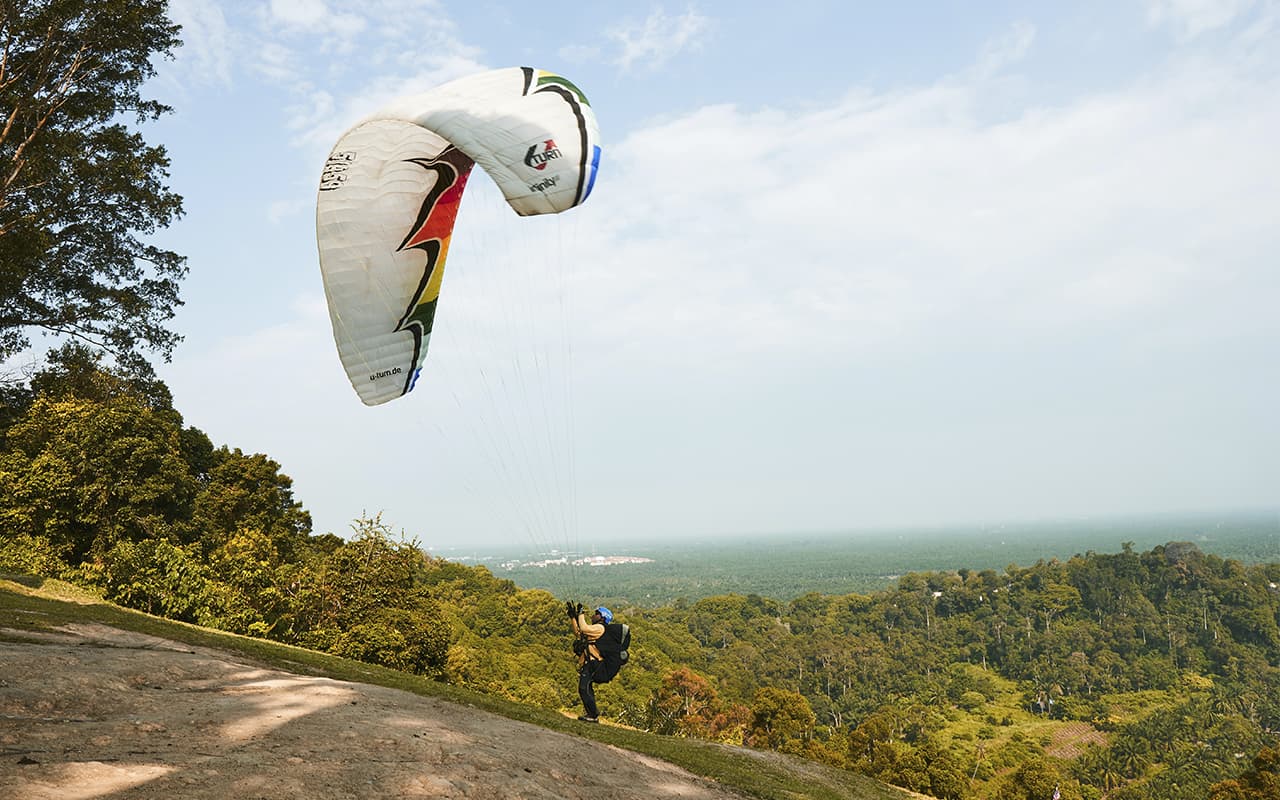Skydiving is about more than freefall – the less talked about area is what happens after your 60-second descent at 120 mph. We talk about parachute time.
Our friends in the fabric don’t get enough love, and we thought it was time to give you an exclusive look into the tangible world with some little-known information about tandem parachutes and a general overview of the different types of parachutes.
TYPES OF AIR PARACHUTES: ROUND VS. RAM
The round parachute is almost OG in the world of skydiving. But with the development of sport skydiving, we realized that there are several problems with this design. Once you got out of the airplane, if you were under a round parachute, you didn’t have much choice about where you landed – you were at the mercy of the wind. Not to mention, when you landed, it was a bit rough.
Fortunately, the round parachute is very far from the types of parachutes we use now.
Ram-air canopies are rectangular, not round, and as the canopy moves forward and down, air is drawn into it, creating an inflated wing. The shape and design of the Ram-air canopy creates a type of parachute that is highly maneuverable and makes its users feel more like pilots than passengers.
SPECIALIZED AND SPORT PARACHUTES
There is no one size or one type that fits all when it comes to parachutes. There are many different types of parachutes in the skydiving world, and each is designed specifically for different levels of experience, disciplines, and to provide the desired performance. The type of parachute used by a wingsuit pilot is often very different from the parachute used by someone flying in a downward-facing body position (freighter).
SIZE MATTERS
In skydiving, there is a natural progression to canopy flying. Typically, skydivers start with larger (more docile) parachutes and progress to smaller, faster, and more efficient types of parachutes. Someone making their first tandem parachute jump will use a tandem parachute designed to comfortably carry the weight of two people and allow for an easy, soft landing. In the world of skydiving, a 366-square-foot tandem parachute is the equivalent of an 18-wheel truck. While the Corvette is driven by elite canopy pilots who control a 69-square-foot canopy.
WE ALWAYS HAVE A SPARE PARACHUTE
When skydiving, you don’t rely on just one parachute. All skydivers jump with an additional type of parachute that is specially designed to be useful in emergency situations. These are the so-called reserve parachutes. Reserve parachutes are designed for reliability over performance. But in a difficult situation, who is trying to look like a hot shot?
WE DON’T REALLY CALL THEM PARACHUTES
If you’re looking to stroll down to the landing zone and blend in with the skydiving crowd, there’s something you should know: in the business, we don’t really call any types of parachutes “parachutes”. That’s because things have changed. As you can see, the types of parachutes we use for modern sport skydiving are very different from the round, docile parachutes of old. Now, because of their maneuverability, they are more like fixed wings, so we generally call them domes!
